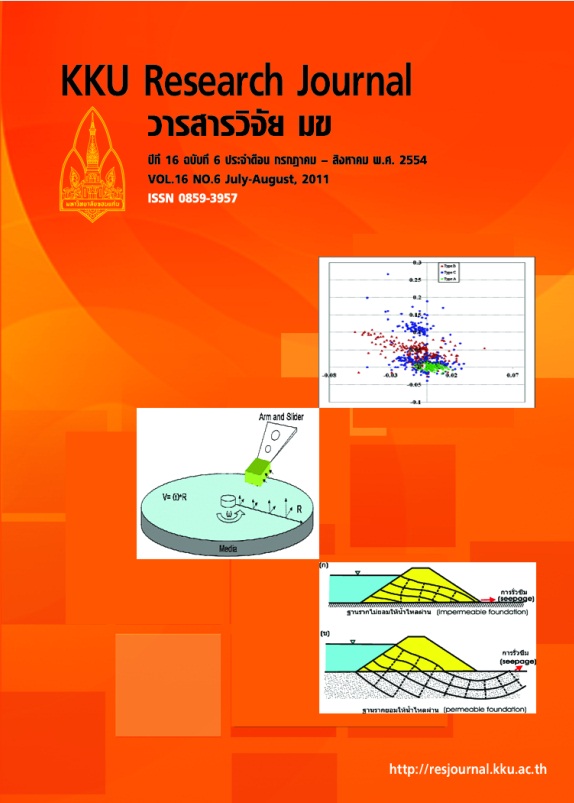Structural and energetics properties of hydrogen bonds in PNA=DNA and PNA-PNA base pairs: a theoretical study
Main Article Content
Abstract
The hydrogen (H)-bond properties in single base pairs of peptide nucleic acid (PNA) binding to its complementary DNA and PNA have been theoretically evaluated using B3LYP/6-31G(d,p) calculation. The N-(2-aminoethyl)glycine (aeg) and pyrrolidinyl 2Saminocyclopentane-1S-carboxylic acid (acpc) groups were employed for PNA backbones. The H-bond calculations of isolated Watson–Crick base pairs and DNA-DNA base pairs were also performed for comparison. The results showed that the type of backbones does not significantly affect the H-bond geometry. The H-bond lengths and angles remain roughly constant in most AT and GC base pairs attached through various backbones, compared to the corresponding isolated base pairs. However, the backbones strongly affect the energetic property of base pairs. The H-bond strengths are significantly increased by the PNA backbones. Moreover, for the aegPNA systems the base pairs comprised of homogeneous backbones provide stronger H-bond interaction than those comprised of heterogeneous aegPNA-DNA backbones, and the calculated H-bond energies of p(purine)- d(pyrimidine) base pairs were larger negative than those of d(purine)-p(pyrimidine) base pairs. Nevertheless, the acpcPNA backbones provide the contrasty effects compared to the aegPNA backbones. This indicates that the H-bond interactions are dependent of the types of backbones and base pairs.
Article Details
How to Cite
Chaiyatoom, W., & Siriwong, K. (2017). Structural and energetics properties of hydrogen bonds in PNA=DNA and PNA-PNA base pairs: a theoretical study. Asia-Pacific Journal of Science and Technology, 16(6), 587–595. retrieved from https://so01.tci-thaijo.org/index.php/APST/article/view/83413
Section
Research Articles


